News
Altcoin News
Altcoin News
Browse all Altcoin related articles and news. The latest news, analysis, and insights on Altcoin.
XRP and ETH Investment Hits Stocks of Two Companies
As cryptocurrencies continue to enter corporate treasuries, two Nasdaq companies’ billion-dollar digital asset investments have been met with harsh backlash on the exchange. Singapore-based technology company Trident Digital Tech Holdings (TDTH) and US sports betting platform SharpLink Gaming (SBET) have announced major plans to invest in XRP and Ethereum, respectively. However, both companies’ stock prices have fallen sharply following these announcements.Trident: XRP treasury dries up, stocks crashTrident Digital announced in a press release that it aims to purchase $500 million worth of XRP. This investment includes a staking plan as well as the XRP purchase. The company also plans to generate returns on these assets through staking mechanisms and further integrate with the Ripple ecosystem.The company aims to raise the funds through equity issuance, private placements, and structured finance vehicles. The planned purchases are expected to begin in the second half of 2025. Trident's move shows that it is following in the footsteps of companies such as Webus and VivoPower, which have made room for crypto assets in corporate treasuries.However, this strategic planning was not received positively by investors. TDTH shares closed the day with a 30.2% decrease following the announcement. The company's total value loss in the last year has exceeded 94%. SharpLink: $1 billion preparation for EthereumOn the other hand, sports betting technology company SharpLink Gaming (SBET) also made headlines with its Ethereum-focused treasury plan. The company had announced that it planned to purchase $1 billion in ETH following the $425 million private investment process led by Consensys. However, the company's S-3 application to the US Securities and Exchange Commission (SEC) immediately following these statements was misunderstood in the market.Investors turned to panic selling, thinking that the filing indicated the resale of millions of shares. As a result, SharpLink shares fell by more than 70% to $8. It later partially recovered and rose above $10. SharpLink President and Consensys CEO Joseph Lubin stated that this decline was due to a misunderstanding and said, "This is just a technical transaction, no one sold their shares." However, this statement was not enough to restore investor confidence in the short term.Iran-Israel conflictThe biggest event that deepened the decline of these two stocks may be the Israel-Iran tension. Because, as we reported in the morning, the market has already woken up to a red day today. Israel's air strikes on Iran at night caused fluctuations in global markets. Cryptocurrencies, stocks, Brent crude oil and US-based WTI crude oil prices also collapsed.

Coinbase Forms Separate Partnerships with American Express and Shopify
The latest statements from Coinbase have created excitement in the sector. US-based cryptocurrency exchange Coinbase has announced that it will be launching a new credit card offering 4% Bitcoin cashback in collaboration with American Express. At the same time, thanks to the strategic partnership with Shopify, the stablecoin payment era is starting in the e-commerce sector. Coinbase One Card: A credit card that earns Bitcoin as you spendThe new credit card "Coinbase One Card" announced by Coinbase offers its users 4% Bitcoin cashback on every spend. The card, which will be offered by American Express, draws attention not only with this cashback feature; but also with advantages such as increased rewards for USDC (USD Coin) balances, higher staking returns for transactions on the Base network, and transaction credits. The card is expected to be available this fall.The trend of crypto exchanges to bring digital assets to their users in daily spending has accelerated recently. MetaMask launched its own debit card last year, and Mastercard has also signed similar projects with OKX and Kraken. Although it is not American Express’ first step in this area, this new initiative seems to further strengthen the company’s presence in the crypto sector. In 2022, Amex launched another card offering crypto rewards in collaboration with Abra.It is also noteworthy that Coinbase made this announcement at the 2025 State of Crypto Summit held in New York. At the same event, the company stated that it is working with the CFTC (Commodity Futures Trading Commission) to offer perpetual futures contracts to US users. Currently, this service is limited to users outside the US only.Shopify starts shopping with USDCAnother move by Coinbase was its collaboration with e-commerce giant Shopify. In this context, users will now be able to make payments with Circle’s USDC stablecoin when shopping in Shopify stores. Transactions will take place over Base, the Ethereum Layer-2 network developed by Coinbase. The new payment option was initially activated with early access for certain stores and will be gradually rolled out to all Shopify merchants over the course of the year. Shopify CEO Tobi Lutke described this new payment option as “the natural way to transact on the internet” and stated that they are fully compatible with the fundamental principles of crypto. This system not only offers ease of payment, but also offers user-specific advantages such as cashback incentives. For example, those who shop with USDC will be able to receive 1% cashback. This infrastructure is built on an open-source smart contract system called Commerce Payments Protocol, developed in collaboration with Stripe. The system supports not only peer-to-peer transactions, but also e-commerce scenarios such as canceled orders, returns, and multiple deliveries.
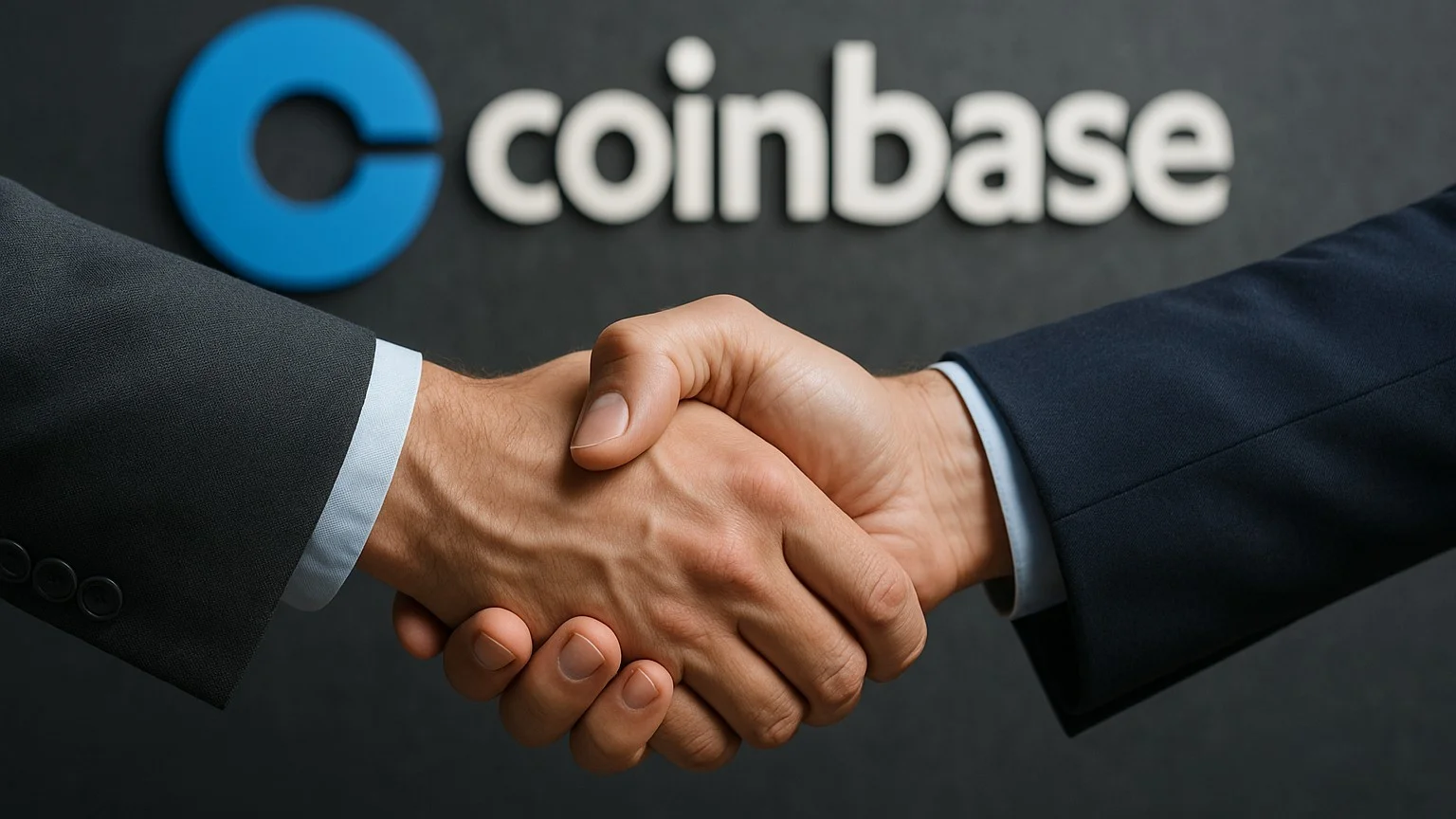
Final Act in Ripple-SEC Case: Parties Appeal to Court for $125 Million Settlement
The nearly five-year-long legal battle between the U.S. Securities and Exchange Commission (SEC) and Ripple Labs may be coming to an end. The parties have filed a joint petition in federal court in Manhattan requesting that the injunction against Ripple be lifted and the $125 million fine be sharedJoint request from the parties: Sharing of the fine and lifting of the injunctionIn their petition to the court, the SEC and Ripple have requested that the current injunction be lifted and that $50 million of the previously imposed $125 million fine be returned to the SEC and the remaining $75 million to Ripple. This request comes after a similar settlement proposal was rejected by the same court last month. However, the parties argue that this time there were “extraordinary circumstances” and that the agreement is now legally valid. The SEC and Ripple lawsuit began in 2020The SEC sued Ripple in December 2020, describing the $1.3 billion sale of XRP as an unregistered securities sale. In 2023, Judge Analisa Torres stated that sales of XRP to exchanges and individual investors were not considered securities, but direct sales to institutional investors could be considered within this scope. Following this partial ruling, Ripple was sentenced to pay a $125 million fine for the sales in question.Is this the final stage of the judicial process?Ripple CEO Brad Garlinghouse announced in March that the SEC had withdrawn its appeal. With this development, it was thought that the legal process was largely over, but the court's final decision was awaited. Now, if this agreement reached by the parties is legally approved with the new petition submitted to the court, the case will be officially closed.The petition included the following statement: “This agreement will ease the burden on both the court and the appellate court, protect the parties' resources, and is consistent with the conciliatory approach the SEC has recently taken in other crypto cases.”In recent months, the SEC's stance on crypto assets has been significantly softened. Following the departure of former chairman Gary Gensler, interim chairman Mark Uyeda took over, and some lawsuits filed with companies such as Coinbase, Kraken, and Binance were dropped or settled. If the court approves the settlement offered by Ripple and the SEC, it will not only close the case; it will also pave the way for Ripple’s operations and make it easier for XRP to gain a greater foothold in the corporate finance world. The fact that XRP has become a strategic asset in corporate treasuries, like Bitcoin and Solana, is an important milestone in terms of the future role of cryptocurrencies.

Bitcoin and Altcoins Shook by Iran-Israel Tensions
Cryptocurrency markets started the last trading day of the week with sharp declines. The markets experienced a serious sell-off due to rising geopolitical tensions in the Middle East and inflation data from the US. Almost all major cryptocurrencies, especially Bitcoin and Ethereum, lost value. The total market value of cryptocurrencies fell by more than 2 percent, from $3.37 trillion to $3.32 trillion. The value of positions liquidated daily exceeded $1.1 billion. Let's take a look at the market details of the day...Major decline in the market: Bitcoin, ETH and other cryptocurrencies in the top 10 declinedDogecoin (DOGE) was one of the assets most affected by the general decline in the market. The popular meme coin lost nearly 7 percent in value in just 24 hours, falling to $0.181. While Bitcoin fell 4 percent to below $103,000, Ethereum fell 9 percent to $2,500. Solana lost more than 6%, while XRP lost nearly 4%. According to JrKripto.com data, a total of $1.04 billion worth of positions were liquidated in the last 24 hours, the vast majority of which were long (bullish) positions. A $317 million long position was liquidated on Bitcoin alone. Liquidations in Ethereum totaled $151 million.Tension between Iran and IsraelTwo main developments stand out behind this decline in crypto markets. The first is Israel's airstrike on a nuclear facility in Iran. With this news coming around 03:30 Turkish time, investors quickly exited risky assets and headed for safe havens. This move pushed the price of gold above $3,410 per ounce, while causing a sharp 13% increase in oil prices. As investors rushed to safe havens, the exit from Bitcoin and altcoins, which are considered "risky assets", increased.US inflation also affected the marketThe second factor affecting the market is the May CPI data announced in the US on Wednesday. Although the data indicating that inflation is slowing was perceived positively in the markets at first glance, many investors used this opportunity to make profits and turned to sell-side transactions. This correction, especially for Bitcoin, which exceeded the $ 110,000 level at the beginning of the week, was a turning point where excessive optimism was broken.The impact of geopolitical tensions and economic data on the markets seems to continue in the coming days. Considering the high volatility of crypto assets, investors are expected to act cautiously and give more importance to risk management. In particular, the Fed's interest rate policy and developments in the Middle East will play a critical role in determining the direction of crypto markets.

ZK Comments and Price Analysis 12 June 2025
ZK Technical AnalysisThe ZK chart reveals a narrowing triangle formation, with price action increasingly compressed between a descending resistance line and an ascending support trend. This setup signals that the asset is approaching a key decision point, and a directional breakout could occur in the near term. Narrowing Triangle Formation The $0.050–$0.051 zone stands out as a crucial support area. Bounces from this region have helped maintain the structure of higher lows, preserving the bullish potential of the formation. On the upside, $0.0576 and $0.0646 serve as intermediate resistance levels. The main resistance lies between $0.0726 and $0.0756—a zone that aligns with both horizontal resistance and the triangle’s upper boundary. This region must be broken to confirm a bullish breakout.If ZK breaks out upward from this tightening range, initial targets could include $0.0646, $0.0726, and eventually $0.0859. Conversely, if the triangle breaks to the downside, support levels at $0.0499 and $0.0475 should be closely watched. A breakdown below these levels could weaken the current bullish structure.In summary, the ZKUSDT chart is setting the stage for a potentially decisive breakout. Traders should monitor key support and resistance levels carefully, as the direction of the breakout will likely define the next major trend.Disclaimer: This analysis does not constitute investment advice. It focuses on support and resistance levels that may present potential short- to mid-term trading opportunities depending on market conditions. However, all responsibility for trading decisions and risk management lies entirely with the user. The use of stop-loss orders is strongly recommended for any trade setup shared.

ZRO Comments and Price Analysis 12 June 2025
ZRO Technical AnalysisOn the ZRO chart, the price action is currently squeezed within a broadening symmetrical triangle. Since March, the formation of higher lows had raised expectations of a bullish breakout. However, the upper resistance line near the $2.96 level has yet to be breached. At the time of writing, the price is trying to hold above the key support zone around $2.10–$2.20. Symmetrical Triangle Formation The rising trendline seen on the chart recently acted as support during the latest dip, triggering a mild bounce. Still, the horizontal resistance between $2.33 and $2.35 remains firm. Unless this zone is broken convincingly, any upward move may struggle to gain momentum. A breakout above this resistance could open the path toward $2.60–$2.70, with the $2.96 level as a subsequent target.On the downside, the first key support lies between $2.10 and $2.05. If the price closes below this zone, the risk of a deeper correction increases, with a possible retracement toward $1.80–$1.79. This area is crucial both as a previous demand zone and because it lies just below the ascending trendline support.In summary, ZRO is at a decisive point on the chart. While the higher lows send a bullish signal, confirmation will only come with a breakout above horizontal resistance. Especially daily closes above $2.33 could ignite a strong rally.Disclaimer: This analysis does not constitute investment advice. It focuses on support and resistance levels that may present potential short- to mid-term trading opportunities depending on market conditions. However, all responsibility for trading decisions and risk management lies entirely with the user. The use of stop-loss orders is strongly recommended for any trade setup shared.

WLD Comments and Price Analysis 12 June 2025
WLD Technical Analysis Falling Wedge Formation WLD is currently moving within a classic falling wedge pattern on the daily chart. This formation is generally considered a bullish structure, especially when it forms at lower levels, as it often results in an upward breakout. The price is currently around $1.08 and is positioned near the midline of the wedge.The price nearing the upper boundary of this narrowing structure increases the likelihood of a breakout. The continued decline in trading volume indicates a typical formation process. Technically, such a consolidation phase often sets the stage for a strong upward move if the breakout is supported by volume.If a breakout occurs, the following levels can be targeted in the medium term:$1.22 → $1.55 → $1.96 → $2.13Surpassing these levels could pave the way for the price to test higher targets around $2.75.For the formation to be considered invalid, the price would need to drop back below $0.91 and break the $0.79 level. However, the current technical outlook suggests that a decline to these levels is a less likely scenario. A breakout on the daily chart with strong volume and a close above $1.13 would be the most critical technical signal to trigger this bullish scenario.As long as the formation remains intact, upward price action appears more likely for WLD.

Stablecoin Move from Jack Ma's Ant Group
Ant International, the international arm of Jack Ma-backed Chinese fintech giant Ant Group, is preparing to take an important step toward playing a more active role in the stablecoin market. According to a report by Bloomberg citing sources familiar with the matter, the company plans to apply for a license under Hong Kong's new stablecoin regulations, which will come into effect in August. Similar license applications are also expected to be filed in other major financial centers such as Singapore and Luxembourg.Ant Group is known as a subsidiary of Chinese tech giant Alibaba and is one of the largest players in the global digital payment sector with its Alipay payment platform, which serves 1.3 billion users.New regulations create new opportunitiesHong Kong announced its first comprehensive regulatory framework for fiat-backed stablecoin companies with the Stablecoin Ordinance, which was passed on May 21, 2025, and will come into effect on August 1. Under the new regime, organizations wishing to issue stablecoins will be required to obtain a license from the Hong Kong Monetary Authority (HKMA). Unlicensed activities may face a fine of 5 million Hong Kong dollars (approximately 640,000 US dollars).This regulation provides a framework for large fintech companies such as Ant International to safely conduct stablecoin operations, while also aiming to position Hong Kong as a regional hub for crypto assets.Stablecoins are becoming key for cross-border paymentsAnt International's stablecoin plans aim to strengthen the company's cross-border payment and treasury management operations. Throughout 2024, one-third of the $1 trillion in transactions processed through the company's Whale blockchain infrastructure were in this area. This system offers significant advantages in terms of time and cost, particularly for transactions with e-commerce giants such as Alibaba.As recalled, Ant Group's planned initial public offering (IPO) in 2020 was canceled due to intervention by Chinese regulators. Following this development, Ant shifted its focus toward investing in corporate solutions and blockchain technology, particularly in overseas markets.Meanwhile, Ant International's stablecoin initiative is tracking the growth of stablecoins in the sector. According to market data, the global stablecoin supply surpassed the record level of $250 billion last week, reaching a new milestone. Total stablecoin supply. Source: DefiLlama

Sharp Decline in the Crypto Market: What is the Reason Behind the Loss in Bitcoin and Altcoins?
The global cryptocurrency market experienced a widespread decline as of June 12, 2025. The total market value decreased by 2.1 percent in the last 24 hours, falling to $3.38 trillion. The daily trading volume also dropped by 5.27 percent to $133.81 billion. On the other hand, the Fear and Greed Index, which is a sentiment index, remains in the Greed zone. So, what is the reason behind this significant decline in Bitcoin and altcoins?Macroeconomic developments triggered the marketThis sharp decline is not unique to cryptocurrencies. A series of macroeconomic and political developments in global markets have significantly reduced investors' appetite for risk. A similar picture is evident in US stock markets. The S&P 500 index fell 0.27% to 6,022.24 points. The Dow Jones Transport Index (DJT) fell 1.87% to 20.52 points, while the NASDAQ fell 0.50% to 19,615.88 points. The Dow Jones fell by a very limited 0.0026% to 42,865.77 points.Significant increase in Bitcoin and altcoin liquidationsOne of the most striking effects of the market shift was the increase in liquidations on crypto exchanges. Over 100,000 investors lost their positions in leveraged trades over the past 24 hours. According to JrKripto.com data, a total of $336 million worth of liquidations occurred in the cryptocurrency markets over the past 24 hours. It was notable that 91% of these liquidations were from long positions. Additionally, the largest single liquidation occurred on the BTCUSD perpetual futures pair on Binance, amounting to $2.15 million.According to CoinGlass data, liquidations of this magnitude typically indicate misaligned expectations about the market's direction. Following the release of inflation data showing a decline, many investors had opened long positions assuming the upward trend would continue. However, the sudden selling pressure swept away both long and short positions. Bitcoin and Ethereum lost value, with altcoins impacted more severelyBitcoin, the pioneer of the cryptocurrency market, is trading at $107,740.76, down 1.68% in the last 24 hours. Bitcoin's market value fell to $2.14 trillion, while its daily trading volume reached $53.99 billion. Ethereum also experienced a similar decline, trading at $2,760.10 with a 1.11% loss. Major altcoins were particularly hard hit by this decline. XRP prices fell by 1.87%, while Solana (SOL) experienced a 3.97% decline in value, making it one of the hardest-hit major cryptocurrencies.What is expected in the short term?This decline in the markets is not driven by specific news or sudden developments, but rather by increasing uncertainty in global markets and technical correction trends. Crypto investors, especially those taking on higher risks through leveraged trading, are facing severe liquidations during such pullbacks.Bitcoin's drop below $108,000 is seen by technical analysts as a potential test of a new support level. Ethereum remaining below $2,800 indicates that buying appetite remains weak. In the coming days, both data flows from traditional markets and crypto developments will continue to be directional. In particular, new economic data to be released in the US and statements by central bank officials will be closely monitored by crypto investors.
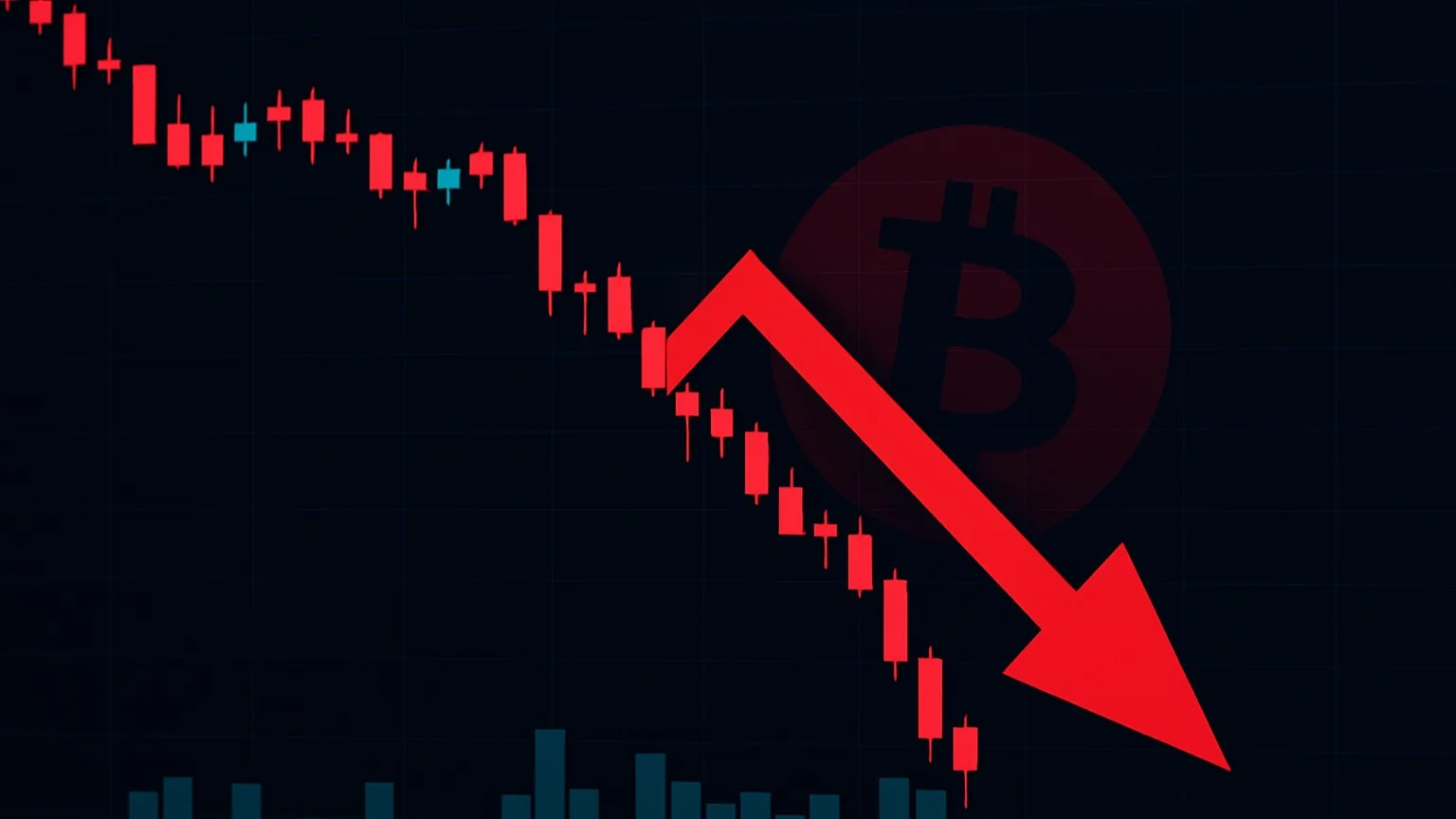
What is Pi Network (PI)?
Pi Network, one of the projects that has made a name for itself in the cryptocurrency world in recent years, manages to attract the attention of both beginners and experienced investors. Launched in 2019 by a team of Stanford University graduates, this project aims to make cryptocurrency mining accessible to everyone. While cryptocurrencies like Bitcoin and Ethereum require high processing power and expensive hardware to mine, Pi Network brings the process entirely to mobile devices, allowing users to mine Pi Coins using only their mobile phones. This approach offers a huge advantage for individuals who do not have technical knowledge or do not want to invest in costly equipment. With millions of users mining through a mobile app, Pi Network is a game-changing model in crypto mining. This system, which aims to reach a wider user base by eliminating access barriers, brings the decentralization principle of cryptocurrencies closer to everyday life. Here's everything you need to know about Pi Coin...Definition and Emergence of Pi CoinPi Network is a Web3 project developed by a team of Stanford University graduates and accessible via mobile devices. The main goal of the project is to eliminate the high hardware costs and complex technical requirements of traditional cryptocurrency mining. In this way, anyone with a smartphone can participate in crypto mining. Pi Network's starting point is to make the cryptocurrency world more inclusive and accessible.Before moving on to Pi Coin, it is necessary to look at the question “What is Pi Network?”. Pi Network's technological infrastructure is based on a lighter and more efficient model called Proof of Consensus (PoC), rather than the Proof-of-Work (PoW) algorithm used in most traditional blockchains, which requires high processing power and energy consumption. In this system, transactions are verified by the network's users confirming each other as trustworthy. Thus, energy consumption is significantly reduced while maintaining decentralization. The network's consensus mechanism is based on the Stellar Consensus Protocol (SCP), which enables both fast and secure transaction confirmations. Thus, we have answered the question of what Pi Network is.Pi Coin is closely associated with mining. In fact, mining is a kind of answer to the question of how Pi Coin works. The mining process is quite simple: Users enter the app once a day and click the button, both contributing to the network and earning Pi. In other words, users who mine from their phones in a few seconds on the one hand, contribute to the security of the system on the other. This method has been developed as an alternative to the processor power and energy dependency of traditional mining. If we look at an example “pioneer” account, the answer to the question of how Pi Coin works on the phone application, especially the “mining” process looks like this: The team behind the project includes Dr. Nicolas Kokkalis (technology lead), Chengdiao Fan (product developer) and Vince McPhilip (community manager), who all hold PhDs from Stanford. The fact that they are all from Stanford University adds an element of trust to the project. So, when did Pi Coin launch? In 2019, the project was officially launched on March 14, “Pi Day”, a day dedicated to the number Pi, and has since reached a rapidly growing user base. After the launch, the Pi Network team published a roadmap that transparently laid out the project's development process and goals. This roadmap aimed to move the network out of its internal economy and integrate it with the broader cryptocurrency market. The plans include allowing users to use their Pi tokens in decentralized applications (dApps), to use them as payment for various products and services outside the network, and eventually to be traded on cryptocurrency exchanges. In other words, Pi Network aims to go beyond just being a novel idea that can be mined from a phone, to a full-fledged Web3 world that works on its own over time and that users can actively interact with.To understand how this vision has taken shape and how Pi Coin has evolved over time, let's take a closer look at the project's development process and key milestones.Pi Coin's History - Key MilestonesOf course, it is no coincidence that Pi Network has reached a large user base in such a short time. As much as the technical infrastructure of the project, the strategic steps taken over time and the strong bond with the community are the most important factors behind this growth. Each new stage shows that Pi Coin is not just an idea, but the product of a vision built step by step. Let's take a closer look at the milestones this vision has passed - the history of the Pi Network.2019: The start of the projectThe Pi Network journey started in March 2019, on Pi Day, as we mentioned above. At that time, everything was very new, there wasn't even a centralized structure. The goal was to attract the first users and give the platform a boost. So they incentivized people to get involved by giving away some prizes.2020-2022: Testnet and growth periodBy 2020, things got a little more serious. The Testnet (test network) phase, which we can think of as a rehearsal of the Mainnet (main network), began. This period was very important for developers to recognize vulnerabilities and bugs in the system. Meanwhile, millions of users joined the system and started practicing through a digital currency called “Test-Pi”. This enabled Pi Network to reach a serious global user base. Subsequently, the Pi Coin whitepaper was published in December 2021.Pi Network Mainnet migration and KYC processThe Mainnet migration, originally planned for late 2023 and then September 2024, finally took place in February 2025. With this transition, Pi Coin can now be traded on a real blockchain. So, according to some, Pi Coin's release date is around this time. Because the coins earned could be transferred to foreign exchanges. However, the identity verification (KYC) system that came into play with this process was challenging for some users. Some users said they lost their tokens, while others were stuck in the verification steps. Pi Network is still using its own KYC system.2025 onwards: Open mainnet and new developmentsWith the launch of the Open Mainnet in February 2025, Pi coin started to be listed on some exchanges. Pi coin, which can be traded on platforms such as OKX, Bitget and CoinDCX, can now communicate with other networks. This paved the way for the coin to be used not only within the Pi ecosystem but also in the wider cryptocurrency market. As of April 2025, the start of the Pi Network, KYC process and mainnet migration are as follows: Price forecasts, fluctuations and speculationAfter Mainnet, there was a serious movement for the Pi Coin price. Pi coin rose rapidly on some exchanges, reaching as high as $2.98, but it also fell as low as $0.6. As of April 2025, the value of Pi Coin has fallen to around $0.56. The fact that it is not yet listed on giant exchanges such as Binance keeps the pressure on the price. Market speculation also moves prices. Although there are sometimes rapid rises in the Pi coin price with a piece of news, these movements are usually short-lived. Pi Coin price movements Since the support of big players like Binance has not yet been received, prices are not fully settled. After the launch, there were drops of up to 80%. Although Binance is listed on many famous cryptocurrency exchanges, the lack of access to Binance's reach causes a lack of visibility and trust. Speculation often revolves around Mainnet developments and news of possible new exchange listings.The Pi Core Team is trying to be more transparent and comply with regulations, but efforts to gain the trust of major exchanges have so far failed. This brings uncertainties in terms of both market capitalization and liquidity. Problems with the Pi Coin KYC process and access to tokens also continue to frustrate users. Pi Network has a huge user community of tens of millions of people behind it. This audience creates serious potential, especially in mobile-focused projects. Yet the system is still fragile; inflationary pressures, KYC issues and general uncertainty are the main challenges for the project. If Pi coin succeeds in establishing an internal economy where users can earn and spend coins among themselves, the need for major exchange support may diminish somewhat. Otherwise, without visibility and high liquidity, the project's sustainability may be questionable.Why is Pi Coin valuable?The reason why Pi is so talked about is not only the “earning coins by clicking on your phone” event. There is actually a huge user network behind this business. So the system is both easy and supported by a huge community. While attracting attention as an energy-friendly cryptocurrency, things are getting bigger with the active contribution of the community. Projects where technology and community power are intertwined like this are rare in the industry. This is exactly what makes Pi so valuable: Technological infrastructure and user engagement are the strongest factors that set the project apart.Energy efficiency and user-friendly mining modelOne of the most striking features of Pi Network is the energy efficiency and user-friendliness of its mobile mining model. Instead of the expensive and energy-consuming hardware used in traditional mining, users can earn Pi coins by simply downloading an app on their phone and clicking a button once a day. In this way, Pi coin stands out as an energy-friendly cryptocurrency. In addition, Pi Network's Stellar Consensus Protocol (SCP) mechanism ensures lower energy consumption.The global Pi Network community is growingPi Network has a large and active user community. This community plays a big role in determining the value of the project. The market and economy created by millions of users enables Pi coin to gain value. Especially thanks to mobile-oriented solutions, as the number of Pi Coin global users increases, the cryptocurrency becomes more valuable. There are different roles in the Pi Network ecosystem. These roles are critical to the healthy functioning of Pi Network and the strengthening of the community. So each role is organized to help the network run smoothly:Pioneer: The main user role who earns Pi tokens by clicking on the mobile app.Contributor: Increasing the security of the network by establishing security circles of trusted members and verifying the network.Ambassador: Contributing to the growth of the network by inviting new users and earning rewards in the process.Node Operator: To verify transactions by running verification software on computer systems.What does Pi Coin do?As for the question “What does Pi coin do?”, Pi Network is building a Web3 ecosystem that will make it possible to develop and use decentralized applications (dApps). It supports the token economy with its own wallet and KYC system. Thanks to this infrastructure, Pi coin will be able to turn into a cryptocurrency that can be used to exchange goods and services, which has great potential for the future of the coin. Some dApps on Pi Network. Source: X / fireside_pi With the Mainnet launch, users started to transfer Pi coins to external blockchains and can trade on various exchanges. At the same time, the presence of node operators on the network shows that the network is moving towards decentralization. However, there are still some shortcomings and issues such as the ongoing KYC process may raise questions about the project's market capitalization and future.Who is the Founder of Pi Coin?As mentioned above, Pi Coin, like many cryptocurrency projects, is led by teams with a strong academic background. Dr. Nicolas Kokkalis, one of the founders of the project, and his team have in-depth knowledge and experience in both technology and social sciences. Let's take a closer look at the background of these team members and how Pi Network came to be.Academic background of Dr. Nicolas Kokkalis and the teamOne of the most prominent founders of Pi Network is Dr. Nicolas Kokkalis. He holds a PhD in computer science from Stanford University and began teaching decentralized applications at Stanford in 2018. Specializing in distributed systems and human-computer interaction, Kokkalis has long believed in the potential of cryptocurrencies. Dr. Chengdiao Fan holds a PhD in anthropological sciences from Stanford and specializes in social computing. Vince McPhilip studied political science at Yale University. This academic background is very important for the community. Vince McPhilip, Chengdiao Fan, Nicolas Kokkalis. Source: The Stanford Daily A Stanford-based crypto projectWhen answering the question “Who is the founder of Pi Coin?”, it is impossible not to mention Stanford. The team is made up of people from Stanford University, making Pi Network a Stanford crypto project. This academic background not only gives the project respectability, but also a strong technological foundation. Innovative perspectives and goals are also heavily influenced by this infrastructure.Transparent development process and communication with the communityPi Core Team is trying to value feedback from the community throughout the development process. While they aim to be transparent about the token economy, development steps, and the future of the project, some critics say more disclosure is needed. Nevertheless, the team continues to regularly engage with the community and share plans for the future of the project.Interest in Pi Network is growing. Many experts believe that Pi could play an innovative role in the crypto world. However, this success will depend on the viability of the Mainnet and the adoption of the Pi concept. In the long run, the ability of projects to deliver on their promises depends on how well the vision and execution align. In this context, the value of Pi Coin and the future of Pi Coin are likely to be shaped by important factors such as the KYC process, the transparency of the token economy and the support of major exchanges.Frequently Asked Questions (FAQ)This next section is for those who want to learn more about Pi Coin. Some frequently asked questions below can help you better understand both the key features and its future potential. Here are the most frequently asked questions and brief answers to this new project:What is Pi Coin and how does it work? Pi Coin is a cryptocurrency offered by Pi Network that can be mined with mobile devices. Users can earn coins by using and interacting with the app on a daily basis. No hardware is required to mine; just your phone.Who founded Pi Coin? The team behind Pi Coin includes Dr. Nicolas Kokkalis, Dr. Chengdiao Fan and Vince McPhilip from Stanford University. How to mine with Pi Coin: You download the Pi Network app on your phone and once a day you can start mining by clicking the button in the app. You earn coins by doing this on a regular basis.When is Pi Coin going to open mainnet: As of 2025, the question of when Pi coin was released has been replaced by mainnet questions. Pi Coin switched to the open mainnet in February 2025. On this date, the coin started trading on its real blockchain and was listed on more exchanges.What Pi Coin does and why it might be valuable: Pi Coin enables energy-efficient mining with mobile devices and has a large user base. It also has the potential to create a Web3 ecosystem with a value that can be used to exchange goods and services in the future.How much will Pi Coin cost? The price will depend on market conditions, exchange listings and user demand. It is currently traded on some exchanges, but not yet on major exchanges. So, the future of Pi Coin is a bit uncertain, but the potential is high.Subscribe to our JR Kripto Guide series to follow the development and potential of Pi Coin closely!

Circle Integrates with Sam Altman's World: Stock Price on the Rise Again
Circle, one of the leading stablecoin companies in the crypto market, is causing a stir on Wall Street with its initial public offering (IPO) last week. Just one week after the company began trading on the New York Stock Exchange under the ticker symbol CRCL, its stock price has surged by over 250%. This rise, which began at the IPO price of $31, pushed Circle's market value above $25 billion following an additional 10.6% increase on Wednesday.One of the key factors behind this extraordinary surge is Circle's integration of its USD Coin (USDC) stablecoin into the identity verification-focused blockchain project World Chain, led by Sam Altman. Additionally, Circle's new-generation bridge protocol, the Cross-Chain Transfer Protocol V2 (CCTP V2), was also deployed as part of this integration.High interest in Circle's IPOInterest in Circle's IPO has been remarkable among both individual and institutional investors. On the day of the IPO, Cathie Wood, founder of Ark Invest, announced that she had invested $373 million in the company. This investment gained 40% in value in just one week.Other crypto-focused companies that went public alongside Circle are also attracting attention. In particular, CoreWeave, which provides computing power to AI and crypto companies, and the investment app eToro are trading above their listing prices. Arthur Hayes, a seasoned figure in the industry, noted that this surge resembles the ICO craze of 2017.Gemini is also on the IPO pathFollowing Circle's IPO success, cryptocurrency exchange Gemini has also begun preparations for its IPO. The company has submitted its S-1 registration statement to the US Securities and Exchange Commission (SEC).A new era with World Chain integrationSam Altman's biometric identity verification-focused blockchain project World Chain has integrated USDC into its network as a “native” asset, while Circle's CCTP V2 technology has also been made available. With this development, USDC assets that were previously transferred via a bridge will now be issued directly locally, ensuring interoperability between systems while maintaining the existing smart contract address.The new protocol enables near-instant USDC transfers between supported networks, while programmable automation systems called “Hooks” can trigger specific actions upon the arrival of funds. This feature offers significant flexibility for developers and DeFi projects.Some market analysts suggest that if Circle maintains its current growth momentum, it could evolve into a structure similar to the US Treasury. In this context, it is noted that the company has the potential to develop a more effective corporate asset management model than Michael Saylor's MicroStrategy (Strategy).
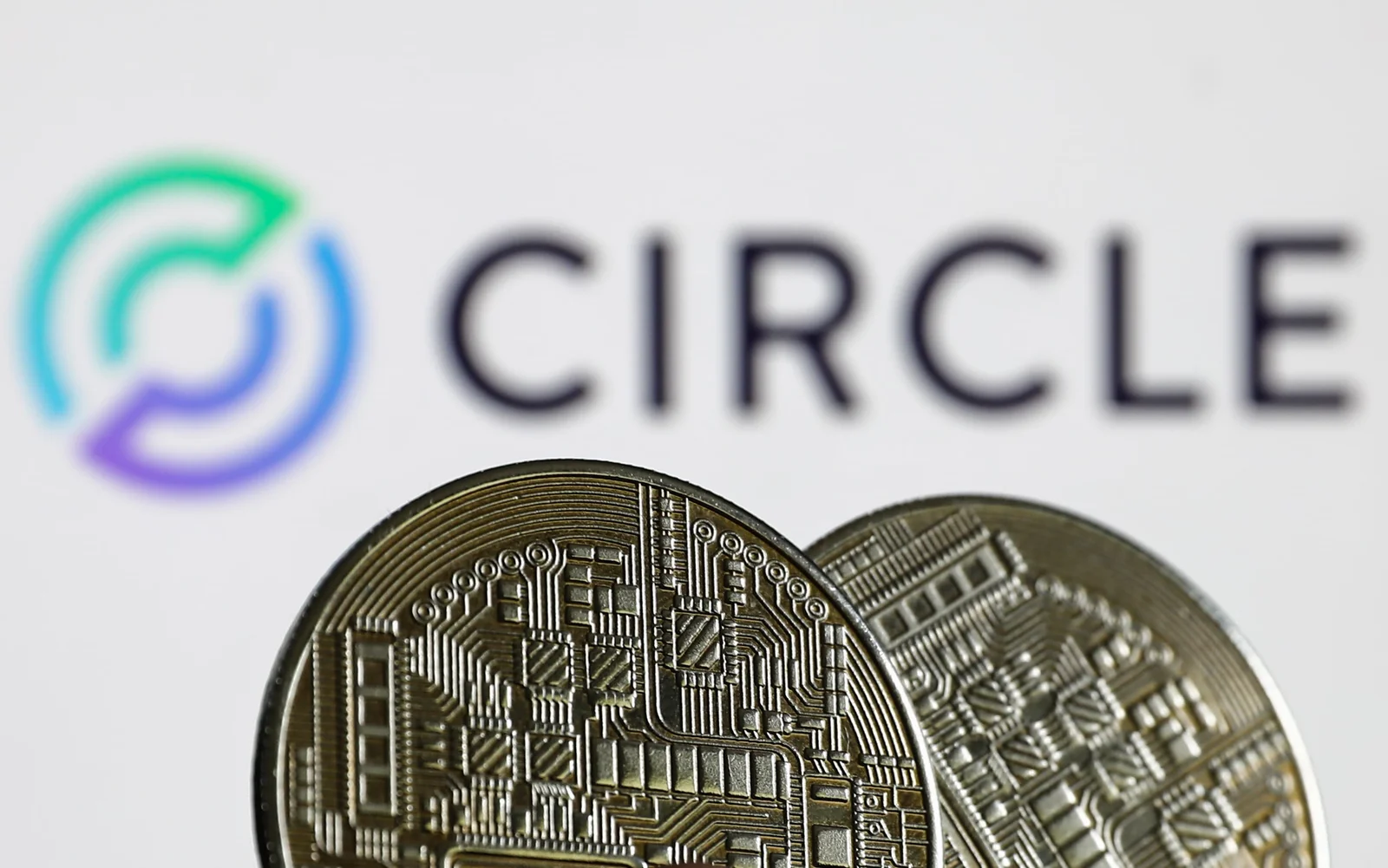
TON Comments and Price Analysis 11 June 2025
TON Technical AnalysisA symmetrical triangle structure is clearly visible on the TON chart. The price has been moving within a tightening formation for quite some time, and it has now reached a critical decision point. Since March, the pattern has been defined by rising lows and falling highs—classic traits of a symmetrical triangle, which often precedes a surge in volatility following a breakout. The downtrend on the chart began around mid-February, finding support near the $2.60 level. From that point on, each bullish attempt has been rejected by the upper trendline. However, the key detail is the consistent formation of higher lows on each pullback. This structure reinforces the legitimacy of the symmetrical triangle, a pattern known for signaling significant price movements.Currently, the price is nearing the apex of the triangle, and the consolidation is becoming increasingly tight. This heightens the likelihood of a sharp breakout—either upward or downward—in the coming days. The horizontal resistance zone between $3.50 and $3.60 stands out as a critical level. If this area is breached, the next potential resistance levels may be around $4.10, $4.70, and $5.69.In the case of a downward breakout, the $3.00 and $2.80 levels should be watched as short-term support. If the lower boundary of the triangle is broken, the price could retrace back toward the $2.60 zone.Another noteworthy observation on the chart is the almost mirror-like symmetry of the ups and downs within the triangle. This reinforces the technical validity of the formation.In conclusion, TON appears to be on the verge of a major move. The direction of the breakout from the triangle will be decisive. Traders should exercise caution at these levels and consider taking positions based on the direction of the breakout.Disclaimer: This analysis does not constitute investment advice. It focuses on support and resistance levels that may present potential short- to mid-term trading opportunities depending on market conditions. However, all responsibility for trading decisions and risk management lies entirely with the user. The use of stop-loss orders is strongly recommended for any trade setup shared.

ADA Comments and Price Analysis 11 June 2025
Cardano (ADA) Technical AnalysisA striking pattern has emerged on the ADA chart. The falling wedge formations, which have appeared multiple times over the past two years, have consistently led to major upward moves. In the current chart, this pattern seems to have formed for the third time, and an upward breakout has already occurred. In the previous two instances, ADA surged from $0.24 to $0.65 and from $0.27 to $1.30 after breaking out of similar falling wedges. Now, with this third breakout, ADA might be preparing for another strong rally. Current View of the ADA The chart also reveals a long-term ascending trend channel. At present, ADA is positioned near the midline of this channel. If the upward momentum continues, the price could rise toward the upper boundary of the channel—around the $1.60 level. This indicates a potential gain of approximately 120% from the current price of $0.71.In the short term, the $0.80 and $0.85 levels are likely to act as resistance zones. A breakout above these levels could open the way for further gains. On the downside, the $0.65–$0.60 zone should be watched as key support. Maintaining this support is critical to prevent invalidation of the formation.In conclusion, if the chart plays out once again as it has in the past, a new bullish wave for ADA may be imminent. Considering the formation structure, trend dynamics, and past price behavior, this setup presents a compelling opportunity for investors.Disclaimer: This analysis does not constitute investment advice. It focuses on support and resistance levels that may present potential short- to mid-term trading opportunities depending on market conditions. However, all responsibility for trading decisions and risk management lies entirely with the user. The use of stop-loss orders is strongly recommended for any trade setup shared.
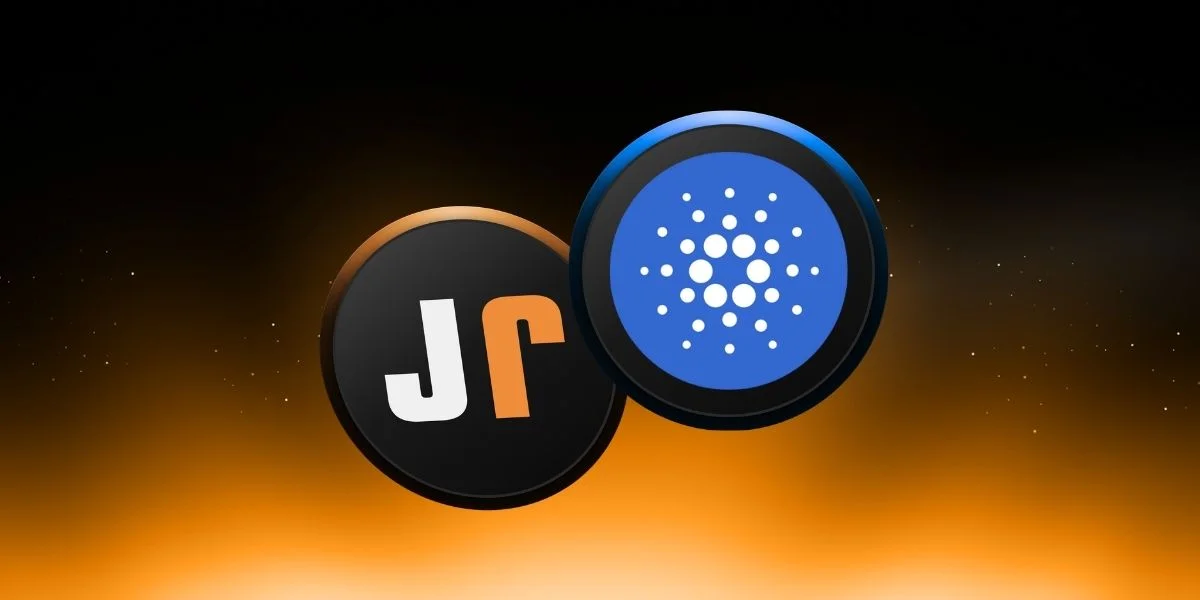
SEC Delays Hedera (HBAR) ETF Application
The U.S. Securities and Exchange Commission (SEC) extended the comment period on the Hedera (HBAR)-based exchange-traded fund (ETF) application submitted by Canary Capital. According to an official announcement dated June 11, 2025, the SEC extended the comment period to receive additional public comment and to review all aspects of the proposal. The decision was made by setting a new evaluation schedule in the approval process of the application.Update from the SEC for HederaThe US Securities and Exchange Commission (SEC) delayed the decision on the Hedera (HBAR)-based exchange-traded fund (ETF) application submitted by Canary Capital. SEC Chairman Paul Atkins, while confirming the extension of the application's evaluation process, stated that this process was taken to allow more time for public comment and to ensure that all aspects of the proposed changes could be addressed. “The Commission has determined that an extension is appropriate to allow for adequate consideration before taking action on the proposed rule change,” Atkins said.Canary Capital is one of several institutions that have applied for SEC approval in the ETF space in recent months. Approval of a Hedera-based ETF could make the network more accessible to institutional investors. However, the SEC's stance affects not only Hedera but also ETF applications based on other major cryptocurrencies such as Polkadot. There has been no official statement from Canary Capital so far. However, the general atmosphere in the market shows that a “wait-and-see” strategy is being adopted as the process is prolonged. The uncertainty regarding crypto ETFs is also causing a cautious approach among investors. So far, only Bitcoin and Ethereum ETFs have received approval and are trading.Many altcoins await ETF approvalAccording to Bloomberg's ETF analyst Eric Balchunas, over 70 crypto-focused ETFs are awaiting approval from the SEC. Latest situation in HBAR priceHedera (HBAR) is trading at $0.18 as of the time of writing, according to CoinMarketCap data. With a market capitalization of $7.60 billion, the token's 24-hour trading volume is $135.97 million. HBAR's circulating supply is 42.24 billion tokens, while its maximum supply is limited to 50 billion. Although it has declined by 9.10% in the last 90 days, it is noteworthy that it has shown a recovery of 8.20% in recent days.According to some, the SEC's delayed stance may reduce institutional investors' interest in crypto-based products. The lack of a clear legal basis for such products creates uncertainty, especially for large portfolio managers. Experts emphasize that the delay of the Hedera ETF could negatively affect the wider financial acceptance process.
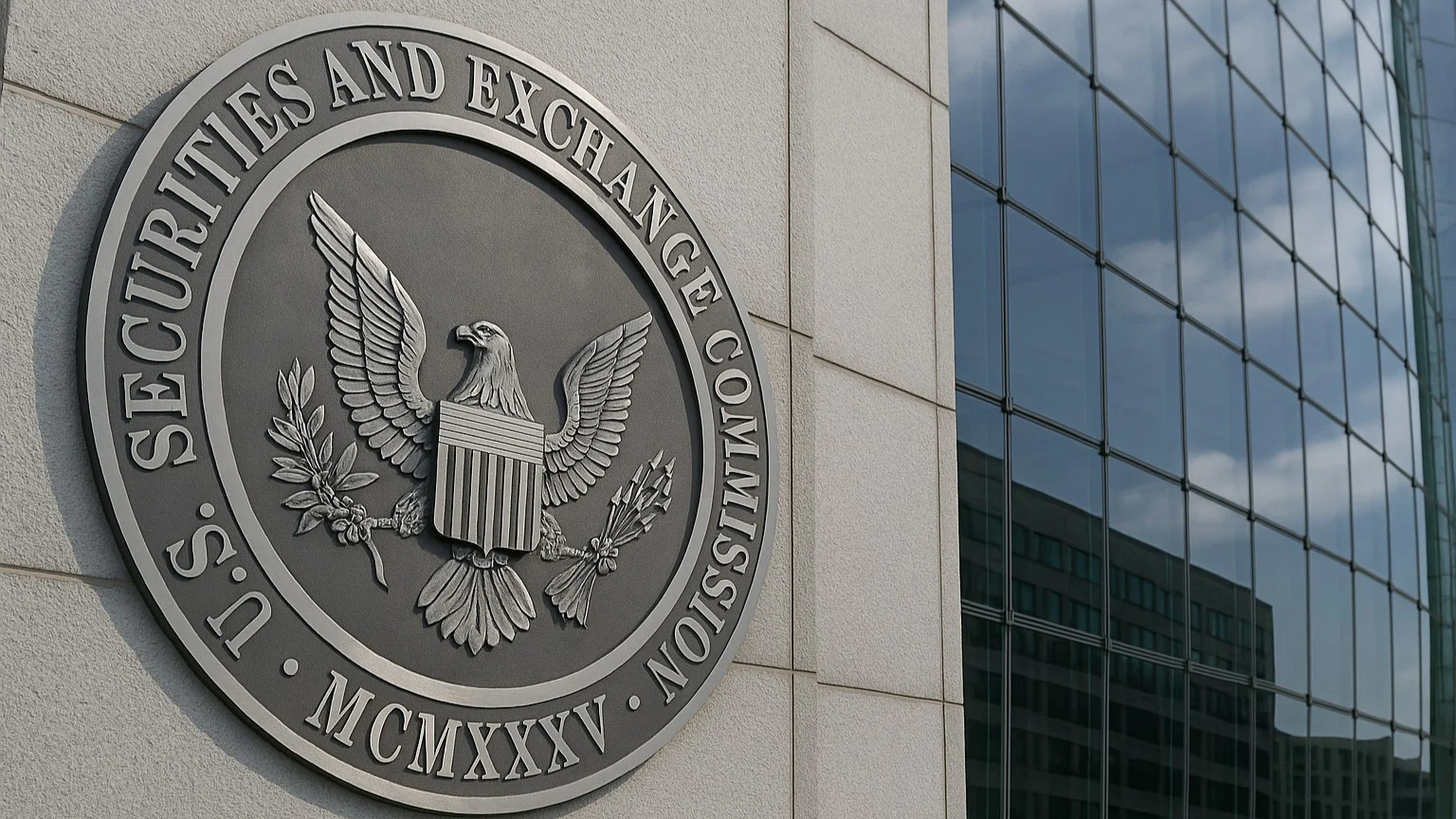
APT Comments and Price Analysis 11 June 2025
APT Technical Analysis – Approaching the Upper Boundary of the Descending ChannelAPT continues its upward movement within the descending channel structure it has been trading in on the 4-hour chart. The price is currently around $5.03 and is moving toward the mid-to-upper band of the channel.In recent days, the psychological resistance at $5.00 was broken, and the price is now trying to maintain stability above this level. As long as it stays above $5.00, the technical outlook will remain positive. The first resistance zone lies between $5.28 and $5.49, followed by the upper boundary of the channel at $5.57 as the next target. Falling Channel Structure If the channel is broken to the upside, a move equal to the height of the channel is expected as per the technical formation. This opens up a potential area extending toward the $6.25 region.However, before a confirmed breakout occurs, the possibility of encountering selling pressure at resistance levels should not be overlooked. On the downside, $5.00 has now become a key support level. If this level is breached, the next support zones to watch would be $4.83 and then $4.45.In summary:APT is moving upward within a descending channel.The resistance zone is between $5.28 and $5.57.If the channel breaks upward, the target could be the $6.25 region.If the price falls below $5.00, $4.83 should be monitored as support.
